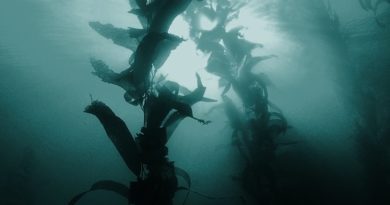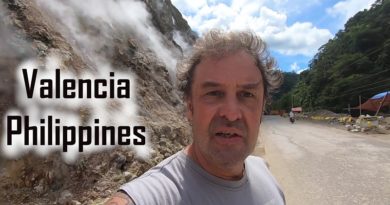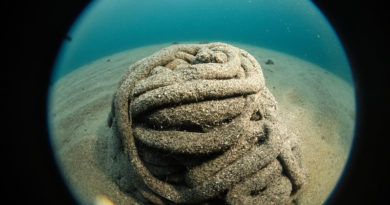Seagrass on My Mind
It is one of the pleasures of having a decade+ of underwater photos and videos that when I am having a discussion with friends and colleagues about a particular organism or ecosystem, I can quickly put together a selection of stills & footage covering that topic, unless of course it’s something completely out of the range of scuba divers, such as the lantern fishes of the deep sea, or a place which I haven’t visited yet, like Galapagos. But if the discussion centers around a diveable ecosystem in South-East Asia, chances are good that I have material to illustrate it. And that can come in handy…
It’s a well known phenomenon in conservation that organisms and ecosystems which are “charismatic” will have more public sympathy, and hence it will be easier to advocate for conservation measures for that organism or ecosystem. The panda bear beats the small freshwater fish; the tiger will beat the beetle when it comes to popularity and potential for motivating conservation efforts.
If you don’t believe me, then set up a charity for the conservation of this little insect, the Hitlerjev brezokec in Slovenian, the Hitler beetler in English. Let me know if the donations to save the Hitler insect are flowing in – my guess is they will not.
In that sense: the seagrass is under-appreciated. Not by marine biologists and fishermen, who know about its many ecosystem services and functions in the greater ocean ecosystem, but in the general public. Divers fly from the other side of the planet (well, used to) to see the corals in Apo Island, which are indeed fantastic, but few people would cite the seagrass as the target of their diving trip. Among the locals, the thoughts are similar; day trip tourists from Dumaguete would visit Apo, but not the seagrass right in front of their coast.
The exceptions would be rather advanced underwater photographers who are looking for rare fish (like the wasp-fish in the images below) or sea slugs among the seagrass. And, if you know where to look, there is ample beauty in the seagrass, fascinating natural history, plenty of biodiversity and good subjects for underwater photo- and videography:
Take a look at this seagrass album on Flickr (btw, all images are Creative Commons, free to use for non-commercial uses like conservation and education):
Turtles!
In fact, there is one animal which lives among the seagrass which is very popular/charismatic/loved … the marine turtles, which graze on seagrass. In the Dauin area we have green turtles, and more rarely hawksbill turtles. Enjoy:
Sea Cucumber Aktsch
I love sea cucumbers! This one (at 0:45 of the video) actively forages through the seagrass with its mouth tentacles, reminiscent of the sandworms in Dune:
Goby
Of course I am scanning seagrassy areas for gobies whenever I dive there. There are in fact lots of them to be found when swimming carefully and not flailing around, especially shrimp gobies. The Dauin/Bacong/Dumaguete area has lots of Cryprocentrus, Ctenogobiops and Vanderhorstia spp. (with the Amblyeleotris typically deeper, and not in the seagrass). This one below is a Vanderhorstia:
The current blows over the muck on all sides of the shrimp #goby – but the goby remains stoic. Be like this goby. #seagrass #underwatervideo pic.twitter.com/A8dZpxjBbD
— Klaus Stiefel (@Pacificklaus) August 20, 2021




